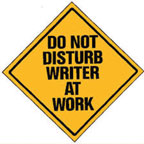If you want your children to read let them write!
Before newspapers go completely out of style, there is one element of their legacy that is richer than Fort Knox and more accessible than popcorn at the ball park: The Editorial Page. For African American children, and children with the greatest need, who suffer disproportionately in low school performance, especially in reading and mathematics, we appeal to a simple practice that accelerates literacy and accomplishes it with help from the Black Press: “Writing to Read”.
Using the editorial page, found in every newspaper, we can witness several salient features: Editorials “express an opinion. They often cite a critical issue to the “writer, notable among issues of the day in a given community – local, regional or national. They are thought-fully crafted and expressed with muted or passionate candor, even acceptable outrage. They are a staple in the news, therefore plentiful.
Most importantly, “Letters to the Editor” are usually reflecting important local issues, grammatically correct and balanced by an equally passionate, well-conceived, opposing view: This contrast of “reasons why” and “reasons why not” distinguishes itself from other writing not only because it is “dynamic, but because it is one of the greatest demonstrations of democracy that we have access to.”
It can be argued that “democracy,” as it was conceived his ptorically, is not evident in the economy, “sports, film, television news, or reality shows: That, in fact, newspapers, in the-ways that-they select “topics and present opposing views is flawed and contrived. Still, as examples of presenting both sides of an issue, the editorial page and especially “Letters to the Editor” offer a glimpse of democracy and suits our purpose here, to teach people, especially young people, to read. As people grow and exchange “learning to read” for “reading to learn” much can be done to enhance literacy skills with these teaching and learning ideas:
1.Select letters to the editor in a Black newspaper that are succinct, contemporary, intentional, and leverage people’s biases and understanding so as to evoke the opposing counterargument.
- Invite learners to copy, in their own hand, two short letters to the editor onto the worksheet.
- Invite the learners to then type the letters to the editor into a word processing document.
- Invite the learners to write or type an analysis of the argument and point out the strengths and weaknesses of both sides of the issue.
- Invite the learners to pre-sent their analysis to an audience and receive their applause.
This simple, 30 – 45 minute writing exercise accomplishes several objectives, at once: Expands the prospective circulation-and readership of Black newspapers, especially through schools.
The learner experiences more “applied language skills” and boosts reading of diverse materials.
The leaner gets exposed to ideas that ate important to people in their community.
The learner expands their vocabulary, with words, correctly spelled, and properly used in context.
The learner practices thinking and” writing; evaluates opposing views; And, without taking sides, offers the critical analysis that boosts critical thinking.
The learner acquires, develops, and practices “presentation skills,” useful in every career field.
The exercise is flexible, portable, and is not confined to school hours only, or any single language.
“A “Working Hard” product of World Arts Foundation, Inc. www.wolrdartspdx.org
All Rights Reserved Contact: Michael “Chappie” Grice, mcg@nothingbutquality,com

